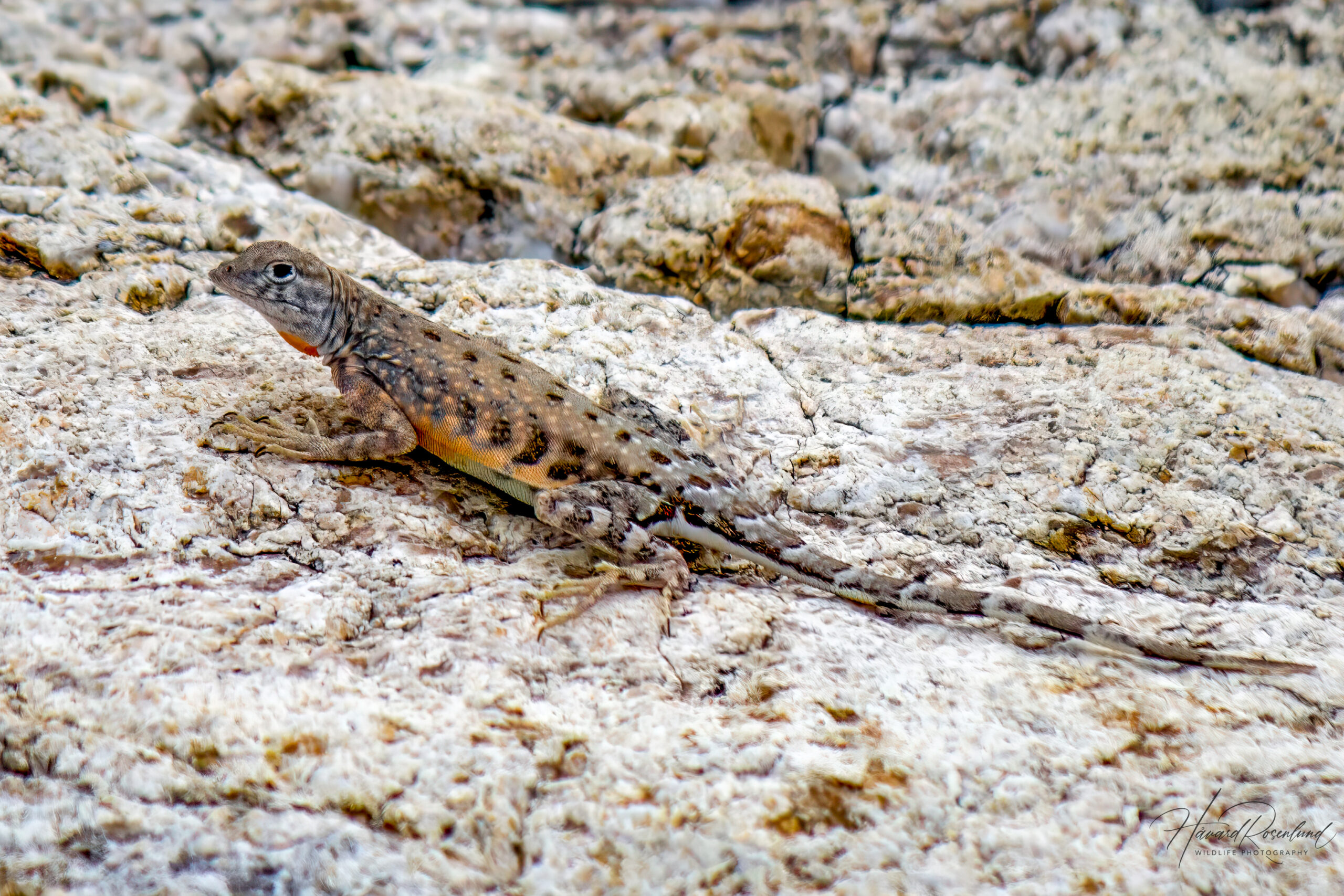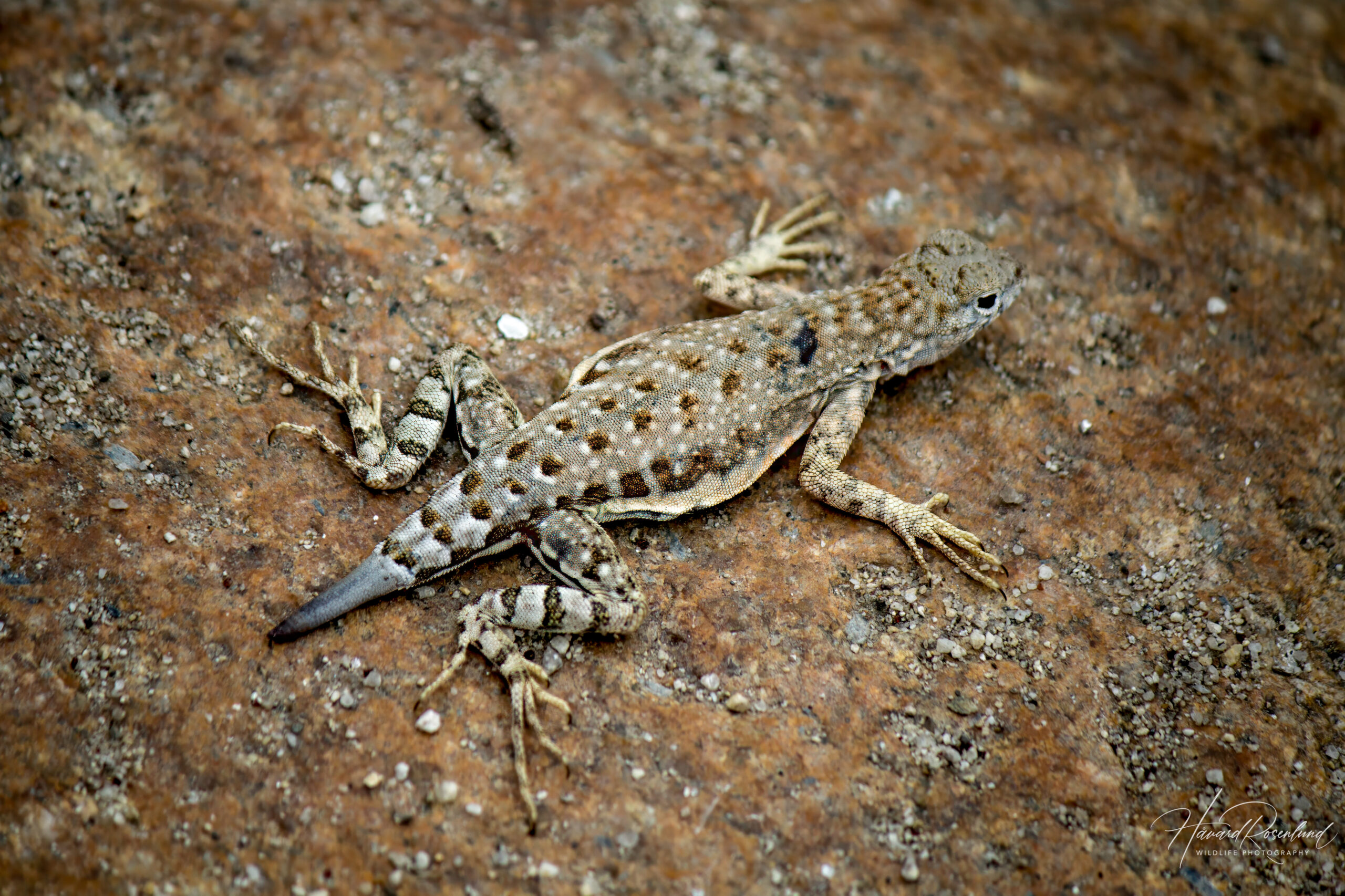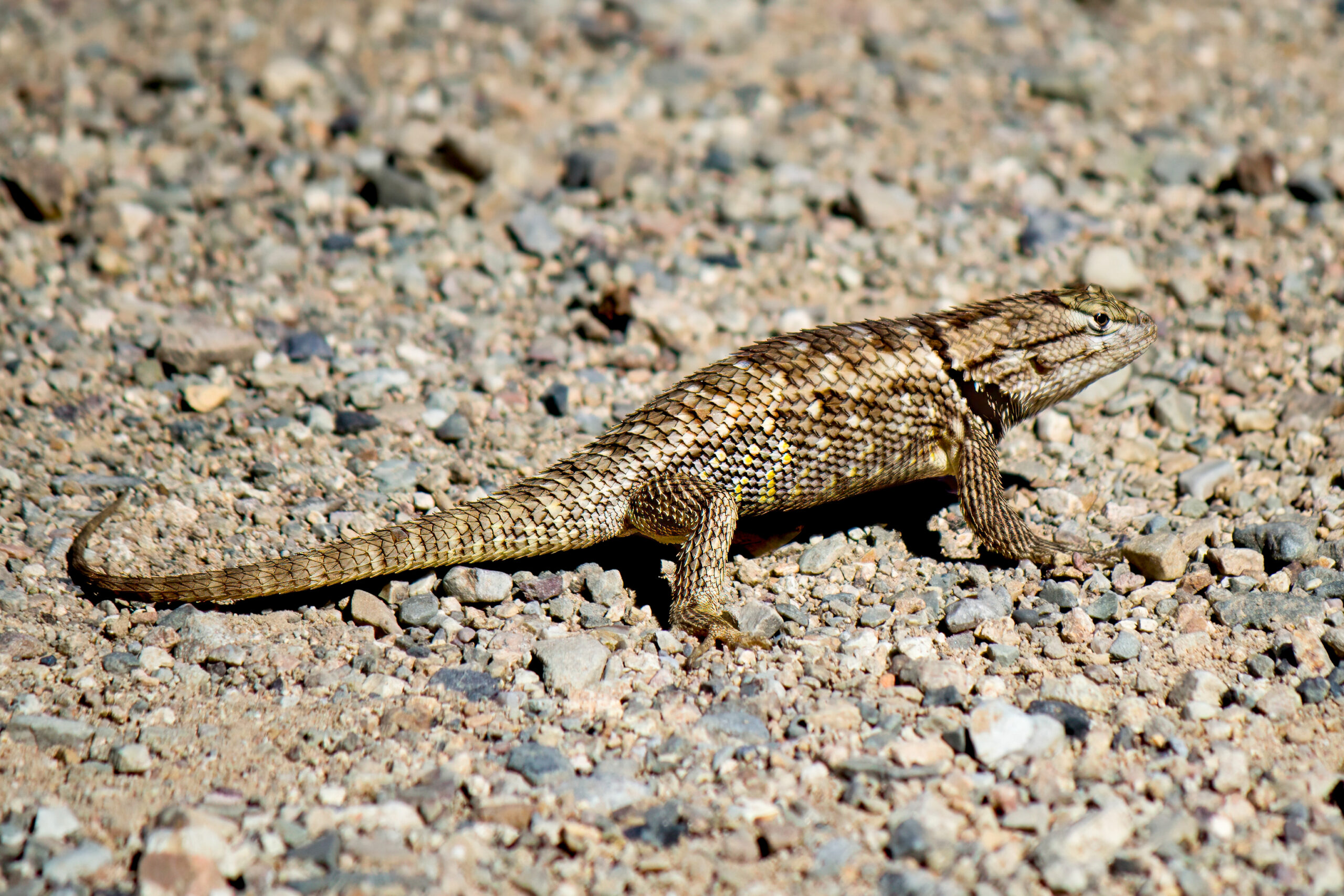Greater Earless Lizard
(Cophosaurus texanus)
Description
The greater earless lizard (Cophosaurus texanus) is a unique reptile native to the deserts of southwestern United States and northern Mexico. This species is notable for its lack of external ear openings, a feature that distinguishes it from most other lizard species. It is the largest of the earless lizards, with adults typically measuring between 7-18 cm (2.7 to 7 inches) in length. Males are larger than females. They have a flattened body with a broad, triangular head, and their coloration can vary from grey to brown, with darker patterns that help in camouflage. Males can be identified by their bright blue belly during the breeding season, which distinguishes them from females and other similar species. These lizards communicate through body language, including push-ups, head bobs, and tail wags. It can be very similar to the zebra-tailed lizard (Callisaurus draconoides), which is distinct from the greater earless lizard by having a black-and-white striped tail
Diet & habitat
Greater earless lizard thrives in arid desert environments, particularly favoring rocky outcrops and slopes where it can bask in the sun. The absence of external ears is an adaptation to prevent sand from entering their ear canals in their desert habitat. They are active primarily during the day, especially in the morning and late afternoon. Their diet mainly consists of insects like ants, beetles, and moth larvae. Remarkably adapted to their desert habitat, they have evolved to consume a significant amount of their water needs from the food they eat.
Reproduction
The breeding season of the greater earless lizard typically occurs in the spring following the seasonal rains. Males exhibit bright colors during this period, particularly a blue belly, and gravid females often turn pink, orange, or yellow on their throats and sides. Females lay clutches of 2 to 9 eggs in sandy or soft soil, usually under rocks or vegetation to protect them from predators and extreme temperatures. The incubation period for the eggs varies based on temperature and humidity, but it generally lasts around two months. Young lizards are independent from birth and receive no parental care.
Status
The greater earless lizard is not considered threatened at a global level, although habitat destruction and climate change could pose future risks. Conservation efforts are focused on habitat preservation and monitoring population trends. It is listed as least concern on the IUCN Red List.






